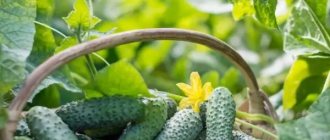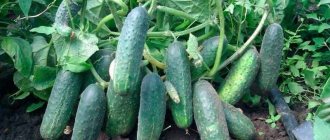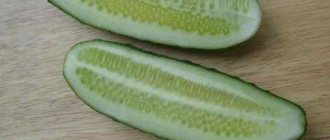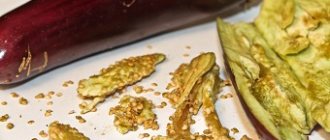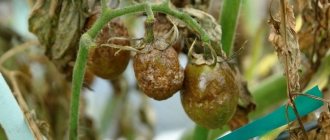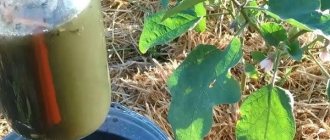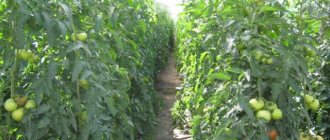Characteristics and description of the variety
The most popular types of “Chinese cucumber” in Russia and neighboring countries include:
- cucumber “Chinese Snake”, characterized by high yield, early ripening, excellent taste, long-term storage on the vine, in case of untimely harvest. The variety does not care about pests and diseases of cucumbers. The length of the fruit is simply amazing - with good care it can reach 50 cm;
Cucumber variety "Chinese snakes"
- “Chinese Farmer” cucumber is a mid-early variety that grows well not only under film, but also in open ground. A powerful, strongly climbing plant, has calibrated and very beautiful fruits, the length of which reaches 45 cm;
- “Chinese miracle” is a cold-resistant Chinese cucumber that bears fruit both in hot drought and when there is frost on the soil. Its fruits are very juicy, without bitterness, grow up to 45 cm;
- hybrid “F1 Chinese disease-resistant” is very hardy and high-yielding. The fruits of the variety have high taste. The variety is mid-season. The growing season is about 54 days. Cucumbers grow up to 35 cm long;
- "Alligators" is the most productive variety of Chinese cucumber. The bushes are growing by leaps and bounds. The bee-pollinated hybrid begins to bear fruit very early - already on the 46th day you can get the first harvest. With mass fruiting, if the crop is properly cared for, the yield reaches more than 20 kg per 1 m²;
Alligator cucumber seeds
- "Emerald Stream", which is not quite "Chinese". It was obtained by Russian breeders. It is the earliest hybrid that begins to bear fruit on the 44th day;
- “Chinese heat-resistant” is a mid-early, bee-pollinated hybrid, the fruiting of which occurs on the 48th day after planting in open ground. The plants do not have side shoots, and the fruits reach a length of 50 cm. The variety is resistant to hot weather and bears fruit well at temperatures up to +35 ° C.
Cucumbers of this type have never failed those who chose them for cultivation, delighting with a rich, friendly harvest and ease of care.
Due to their low calorie content, Chinese cucumbers are widely used in dietary nutrition. 100 g of cucumbers contain only 14 kcal, and the juicy pulp includes:
- vitamins A, B9, C, K;
- microelements - magnesium, calcium, aluminum, sodium and fluorine;
- choline
Chemical composition and vitamins of cucumber
Chinese cucumber is not only very tasty, but also very healthy. Eating it improves the functioning of the cardiovascular system, normalizes the functioning of the kidneys and gastrointestinal tract. The high fiber content of these vegetables helps eliminate “bad cholesterol” from the body.
Features of the variety
Among the features, I would like to note the impressive length of the fruits - up to 60 cm and their amazing and bizarre shapes. Their taste is not similar to the taste of classic varieties; long cucumbers are distinguished by incredible freshness and juiciness of the pulp, somewhat reminiscent of the taste of watermelon.
The fruits of Chinese cucumbers grow up to 60 cm in length
Growing Chinese cucumbers has its own secrets, which we will share below.
There is no need to rush into planting Chinese varieties of cucumbers. The later they are planted in open ground, the earlier they begin to bear fruit. The optimal planting time is early June.
Country of origin, growing regions
Most of the varieties of Chinese cucumber were bred and grown in China for a long time, until they became interested in it, founded in 1995 and being, at the same time, a breeder and seller of its own products, which are very popular in Russia and neighboring countries. It was this company that created such hybrids of Chinese cucumber as “Emerald Stream”, “Alligators” and “Chinese Heat Tolerant”.
The SeDeK company creates varieties of cultivated plant seeds
Due to their good drought and frost resistance, “Chinese” are grown with pleasure both in the southern regions and in the north. Cucumber varieties begin to bear fruit very quickly and manage to produce a harvest even where winter comes early. Moreover, they grow well both in greenhouses and without any shelter, which attracts the attention of more and more gardeners living in different regions to them.
Advantages and disadvantages
Quite a lot has been said about the benefits of the Chinese cucumber. This:
- high yields;
Chinese cucumbers are highly fruitful
- early onset of fruiting;
- friendly tying;
- heat resistance;
- frost resistance;
- ease of care;
- excellent quality of fruits that do not lose their properties for a long time if they are not removed from the bush in time;
- fruiting until frost;
- excellent taste and appearance of cucumbers;
- resistance to disease.
Chinese cucumbers are not susceptible to most fungal diseases
However, varieties of this type of cucumber also have disadvantages, the presence of which does not frighten vegetable growers at all. These include:
- short shelf life of cucumbers. After picking, they last no more than 2 days and then wither;
- unsuitable for canning, although smart gardeners still came up with a way to prepare “Chinese” for the winter;
- low percentage of seed germination. It is better to propagate cucumbers using the seedling method rather than sowing directly into open ground;
- If the plants are not tied up, the fruits will grow in an ugly shape.
Read about how to grow tomato seedlings here.
Read about pickling varieties of cucumbers here.
The ugliness of Chinese cucumbers in the absence of a garter
Those who have grown a Chinese miracle on their plot more than once are not afraid of any shortcomings, since Chinese varieties have many more advantages, and they completely cover all their negative aspects.
Although it is believed that Chinese cucumbers cannot be canned, enterprising housewives still do it, and very successfully. To do this, cut long fruits into even (5-7 cm) rings, add a tomato cut into 4 parts and a small onion halved, spices to taste and pickle like any other type of cucumber.
Growing
Growing “Chinese” has its own nuances. It is necessary to properly prepare the soil for seedlings. The productivity of this type of cucumber crop directly depends on this.
Two layers are made: the bottom one is cow dung mixed with compost and straw, and the top one is humus.
Mullein or cow dung is a natural fertilizer
Before planting, seeds need to be prepared: they are soaked for several hours in a pinkish solution of potassium permanganate (potassium permanganate).
Read about mineral fertilizers for cucumbers at the link.
Due to the low germination of seeds, Chinese cucumber is grown mainly by seedlings. Seeds are sown in separate pots from the end of March to a depth of 1 cm. Before emergence, the pots are covered. The sowing time depends on where the sprouts will be planted: if under a film, then the seeds are sown earlier, if in open soil, then at the end of April. As soon as three strong leaves appear, the seedlings are placed in open ground. This will happen no earlier than a month after sowing the seeds.
Before planting seedlings in a permanent place of growth, prepare grooves at a distance of 25 cm from one another, the width and depth of which should be at least 30 cm. Sawdust and natural fertilizer (manure) mixed with humus are laid on the bottom, and fertile soil is sprinkled on top.
Due to the complete absence of side shoots, Chinese cucumbers are planted more often than their classic relatives. If for the latter a 70x70 planting scheme is suitable, then for the “Chinese” the optimal option is 20x25.
In the open ground
Seedlings are transferred to open ground when the threat of night frosts has passed, starting in the second decade of June. Until the sprouts get stronger, it is advisable to cover them with film. As soon as they begin to grow, the film is removed. The distance around the plants is mulched with sawdust, dry hay or straw. This will protect them from weeds and retain moisture.
The “Chinese” love to hang down. It is necessary to give them such pleasure and organize supports for them, to which it is necessary to tie the plants. As soon as the stem is formed, five shoots and the first cucumbers are removed from it.
Chinese cucumbers love to droop
Caring for cucumbers is very simple. It consists of watering and fertilizing. Water the plants twice a week; in dry and hot weather, you can increase the number of waterings. Settled water is used for irrigation. It is better to water the crop after sunset to avoid sunburn.
Feed once every two weeks. Urea and natural organic fertilizers are suitable for feeding.
In greenhouses
Seedlings are planted under the film in early May. The features of cultivation and care in a greenhouse and open ground are practically the same. Regarding cultivation in greenhouses, we can only add that in hot weather the plants should be provided with ventilation, and also for those varieties that are pollinated by pollinating insects, access of insects to the greenhouse or greenhouse should be organized.
When irrigating in the evening, the greenhouse is ventilated
If the plants receive competent and timely care, they will delight you with their amazing fruits until the fall.
In order for the Chinese cucumber to bear fruit for as long as possible, it is necessary to promptly remove all dry, yellowed, diseased leaves and fruits from the plants.
Cucumber Chinese Emperor
This is a disease-resistant, aromatic, early-ripening cucumber. Parthenocarpic, early-ripening hybrid for growing in film greenhouses and open ground. The period from shoots to harvest is 42-45 days.
The fruit is elongated-cylindrical, length 37-40 cm, diameter 5.0-5.5 cm, weight 350-400 g, uniform dark green color, shiny, large-lump. The hybrid is resistant to powdery mildew, mildew, fusarium and high temperatures. Widely used for use in fresh and salads.
Productivity
All varieties of Chinese cucumber produce high yields. The maximum amount of fruit collected that has been recorded is more than 30 kg per 1 m². In addition, if cucumbers are not picked in time, they can remain in the garden beds for a long time without overgrowing or losing their appearance and taste. This fact is very pleasing, because modern people, busy not only with garden beds, but also with work activities, often simply do not have enough time to pick ripe fruits from the bush in time, especially since they are not stored for long when picked.
Chinese cucumbers produce up to 30 kg of fruit per 1 sq. m.
Preparing the soil before planting
You need to start preparing the soil in the fall, since most minerals and substances that fall into the ground decompose into microelements in 4-5 months and only then can they be absorbed by the roots of the plant. A prerequisite for normal growth is the presence of humus, black soil and sawdust (1:2:1), only in such soil will the seeds germinate normally and quickly gain the necessary vegetative mass. In the spring, at the beginning of April, ammonia fertilizers are applied, usually nitrate. 20-25 grams per 1 square meter is enough.
Ash has a very good effect on the vegetative mass, but its excessive amount can slightly burn the leaves. If you see light spots on the leaves, you need to fill the area with water - it will partially neutralize the burn. You can no longer apply organic fertilizers; you need to wait a few days until the leaves take on their natural green color.
In the process of soil preparation, superphosphate plays a very important role, which is applied at least 30 grams per square meter. Potassium and phosphorus fertilizers are necessary for the formation of fruits; they have a beneficial effect on color formation. The period before complete decomposition of phosphorus or potassium in the soil is 2 years, so fertilizers will be useful even for the next vegetable that will grow in this place. It is advisable to make the soil as loose as possible, since the vegetable does not like a dry surface. You can mulch the ground with sawdust or humus.
Diseases and pests
Despite the fact that the “Chinese” are resistant to most diseases, they can be affected by:
- spider mite;
- melon aphid;
- powdery mildew;
- fungal anthracnose;
- bacteriosis, to which Chinese varieties of cucumbers are susceptible.
Pest of cucumbers - melon aphid
Also, when cultivating plants, you may encounter:
- fusarium (root rot);
- gray mold;
- brown spotting;
- cucumber mosaic;
- lesions of the sprout fly and cucumber gnat.
If a disease occurs, measures should be taken immediately so as not to be left without a harvest. For prevention purposes, it is worth treating plants with special preparations.
Gray rot on tomatoes, how to treat it, read in this material.
If your cucumbers have been attacked by aphids, then a solution prepared from 90 g of chopped onions or 60 g of finely chopped garlic, steeped for 24 hours in 10 liters of water, will help remove them, and spraying with infusions of dandelion, yarrow, and horse sorrel will help prevent spider mites. or celandine.
Chinese climbing cucumber
The Chinese climbing cucumber bears fruit late (70 days before the greens appear), but gives a plentiful and friendly harvest. The crop needs to be pollinated - it needs to be planted in open beds, fairly long vines, medium branching.
The cylindrical shape of the cucumbers grows up to 12 cm and weighs up to 130 g. The waxy green cucumbers are a real treat for the family table. The plant is resistant to powdery mildew and cold, the fruits tolerate transportation well, suitable for preparing culinary delights.
Do you think it is more profitable to grow gherkins than to grow varieties that produce large fruits?
Not really
conclusions
To grow a healthy crop and get a rich harvest of delicious vegetables, you just need to follow simple planting and care rules.
You can also grow Chinese cucumber at home, on the balcony. To do this, plants need to be provided with conditions as close as possible to garden conditions, which include fertilizing. There is no way you can do this at home with manure or bird droppings, but for this you can use ordinary bread infused in water (1:3) and add a matchbox of mineral fertilizer to this infusion (for every 12 liters).
Read about growing cucumbers on the balcony in this article.
